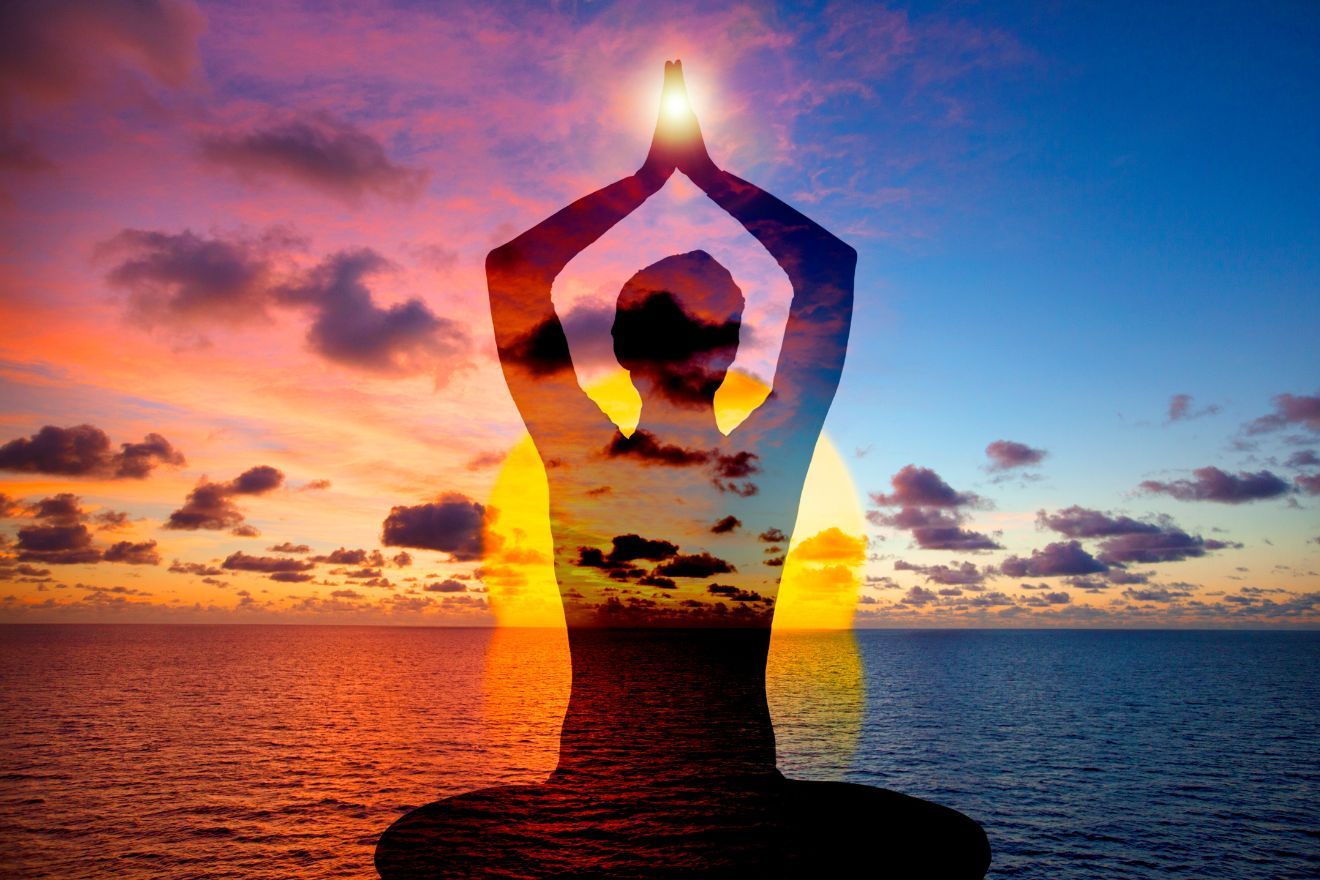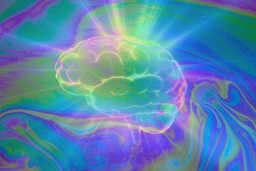Like many people, I experimented with psychedelics in my youth, despite the fact that I had no idea what I was doing or any intentions driving those experiments. As I got older, the years that followed consisted of an occasional visit to the mushroom consciousness for purely recreational purposes, and although I was fortunate enough to not be suffering from any serious mental health challenges, I did find myself experiencing an epiphany or two during these psychedelic experiences that consequently led to deeper self-awareness, self-acceptance, and positive shifts in my personal identity.
The intentional return to plant medicine as a tool for healing, self-actualization, and spiritual growth was preceded by my adoption of a meditation practice. Upon first being called to meditation, I found the practice quickly took hold of my spare time and led me down the rabbit hole of expanding consciousness, and connecting to a whole, new way of being.
After a few months of mainly practicing my own flavors of kundalini and mindfulness meditation, I experienced what I later learned to be, a kundalini awakening. This discombobulating experience deepened my curiosity about consciousness and led me to begin an intentional use of plant and fungi medicine that has gone on to dig up and resolve trauma, kick addictions, and put me on a path where my purpose is synonymous with my spiritual being.
Follow your Curiosity
Sign up to receive our free psychedelic courses, 45 page eBook, and special offers delivered to your inbox.How do meditation and psychedelics intersect?
But what exactly is meditation and how is it related to psychedelic medicines? How can the two modalities work together symbiotically? Are there benefits to engaging with both simultaneously? You hear a lot about meditation, it’s been around for centuries, and everyone seems to agree that it’s a good thing for us humans to do, but why?
Meditation can be defined as a set of cognitive training practices and techniques that intend to monitor and regulate attention, perception, emotion and body functioning such as breathing. Developed in many different cultures and spiritual traditions, meditation takes many forms, with more than a 100 varieties practiced today. Most scientific research on meditation has focused on Buddhist techniques, originating in China, Tibet, India and throughout Southeast Asia, with a particular focus on practices often categorized as mindfulness meditation.
When we add psychedelics to the mix, with their varying molecular structures, doses, set/setting combinations, and genetic, epigenetic, psychological, medical, spiritual, cultural and racial intersections, we exponentially multiply the variety of possible experiences and outcomes. As noted in the article, Psychedelics, Meditation, and Self-Consciousness when discussing both meditation and psychedelics’ ability to bring the person into a state of ego dissolution:
“First, it is important to emphasize right away that neither meditation nor psychedelic states can be conceived as simple, uniform categories. Many variables modulate the subjective effects of contemplative practice and psychedelics, including the style of meditation or the drug and dosage used, as well as personal factors such as level of experience and personality traits. In particular, dramatic disruptions of self-consciousness seem to occur mostly for highly experienced meditators or with high doses of psychedelics. Thus, we suggest that both meditation and psychedelics can induce a wide variety of global states of consciousness, but these states are sensitive to a multitude of factors…”
Research on Brain Networks
Research into the brain states of both experienced meditators and those in a psychedelic state of consciousness have shown several striking similarities between the two experiences, especially in regards to the default mode network (DMN). Several studies have shown brain regions that make up the default mode are deactivated during mindfulness meditation practices. And the research conducted by Dr. Robin Carhart-Harris showed a similar decrease in DMN activity in subjects using ayahuasca, psilocybin, and LSD.1,2
Further research looking into psychedelics’ efficacy in addressing a host of mental health challenges, from depression to addiction, indicates that a good amount of the therapeutic impact of these medicines stems from their ability to quiet the mind and remove the subject from the incessant activity of the DMN.
In Psychology Today, author Allan J. Steinberg MD notes: It is my contention that the reason psychedelic assisted psychotherapy and meditation can heal us, and improve us, is that both induce the experience of transcendence of space, time, and ego. A review article concerning psychedelics concluded that mystical experiences, which entail the transcendence of space, time, and ego, are “a key mediator of the sustained psychological benefits reported in both healthy and clinical populations.”
The author adds further,
“What is left to experience after one transcends space, time, and ego? Many subjects undergoing psychedelic assisted psychotherapy, and advanced meditators, report that transcendent to space, time, and ego they experience consciousness itself—they become conscious of their own consciousness. It is my contention that this experience is the cause of the therapeutic benefits of psychedelic assisted psychotherapy and meditation.”
On one hand we have research supporting psychedelics’ ability to quiet DMN activity and on the other, you have research showing meditation having a similar physiological impact on the brain. Furthermore, aside from the similarities of the physical effects on the brain, psychedelic and meditative states also share common themes from the greater perspective of Consciousness, including feelings of oneness, gratitude, humility, compassion, peace and love.
How are meditation and psychedelics different?
When comparing psychedelics and meditation, we see two very different sets of tools that seem to be very good at helping us humans in similar ways. But not everyone is an advanced meditator or able to get into that quiet state solely through meditation, where the DMN quiets for deep work. So, how can the average person working with psychedelics use meditation practices to augment their personal healing journey and path of personal development and exploration of consciousness?
Personally, I’m a proponent of using meditation throughout one’s psychedelic journey, including the time preparing for the experience, while in the experience itself, and as a tool for integrating the learnings and insights into one’s life in the weeks and months after the experience. As a practitioner and guide working with plant medicines, I advocate for an energetic detox for at least a week leading up to a psychedelic experience. This detox includes mindfulness meditation and building up one’s awareness of breath and body prior to their journey. This preparation is useful for building up the right ‘set’ and getting oneself in the strongest mental state prior to the psychedelic experience.
Using Meditation as a Tool for Preparation and Integration
A 20-minute body scan/awareness meditation before ingestion of the medicine is advised and meditation techniques are reinforced as helpful tools to promote surrender to the medicine as well as ways to get through challenging parts of the psychedelic experience, should those challenges arise.
Author, Vanja Palmers states on MAPS.org, “While it is true that the setting and the techniques used at traditional Buddhist retreats are not geared toward the use of psychedelics, it is quite obvious that skills in meditation, the practice of being at peace within one’s body and mind, even in uncomfortable places, can be of great help in the course of a psychedelic session.”
Returning to and focusing on ‘the breath’, body scanning and mindful relaxation, and grounding with body awareness are three helpful meditation techniques that are effective ways to navigate the possible twists and turns of challenging, overwhelming, or anxiety-inducing psychedelic experiences. For the person going through these challenges, being able to tap into their own abilities and strength can be incredibly empowering and therapeutic and provide long-term life benefits when integrated well with ongoing meditation and other integration tools.
Which brings us to integration and where the real work starts. In an article published right here on Psychedelic Support back in 2018, author, Ben Shechet notes:
“It is important to understand, however, that integration is something that happens when we provide space, openness, and availability for it to happen; it’s not really a process that we can force or even necessarily guide. He continues: “if meditation is a tool we wish to employ, we will have to let go of any ideas we might have about what is ‘supposed’ to happen or what direction our integration should take. An attitude of openness, warmth, and attentiveness toward the process is probably optimal…”
Mr. Shechet makes a very good point that applies to both meditation and psychedelic medicines and that is about the importance of surrender. Expectations and control are the opposite of surrender and they are common themes in the psychedelic space.
Similarly, when one is set on meditation and has firm expectations of what a ‘successful’ meditation session looks like and what outcomes they want to see, they’ve already shot themselves in the foot and shot themselves out of the present moment. Their ego is in there trying to shape the experience according to expectations and direct the outcomes based on need or desire, projecting into a future that never arrives.
A more productive approach is what is described above – provisioning space for the higher consciousness to do its beautiful thing, just like the psychedelic experience itself, our integration should be open, loving, fearless and intentional, with no set boundaries or expectations, just a space in the present moment to let it all beautifully unfold.
Complimentary Experiences
Psychedelics and meditation are highly complementary modalities that also hold many similarities. With the disruption of the DMN through both meditation and psychedelic medicines, one can access non-ordinary states of consciousness that can lead to extraordinary positive change, including transformational healing, heightened awareness, and a connection to something much, much bigger than ourselves.
Follow your Curiosity
Sign up to receive our free psychedelic courses, 45 page eBook, and special offers delivered to your inbox.References
- Tagliazucchi, E., Roseman, L., Kaelen, M., Orban, C., Muthukumaraswamy, S. D., Murphy, K., … & Carhart-Harris, R. (2016). Increased global functional connectivity correlates with LSD-induced ego dissolution. Current Biology, 26(8), 1043-1050.
- Carhart-Harris, R. L., Leech, R., Hellyer, P. J., Shanahan, M., Feilding, A., Tagliazucchi, E., … & Nutt, D. (2014). The entropic brain: a theory of conscious states informed by neuroimaging research with psychedelic drugs. Frontiers in human neuroscience, 20.








